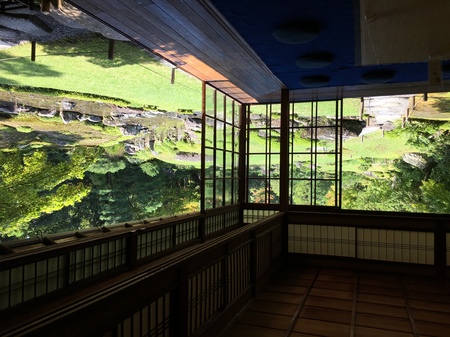猥雑の秩序
猥雑の秩序はあるのか。猥雑というと秩序が無い状態と考えてしまう。秩序が乱れている状態がひどくなれば猥雑になるかもしれないが、それは秩序の範疇にとどまっているから、そうかそれが猥雑の秩序か。
そうならば、秩序を乱すことは簡単だが、ただ乱しただけでは猥雑な感じにはならないような気がするから、どこまで乱せば猥雑になるのだろうか。猥雑とそうでない境目は、バロメーターは、と考えてしまう。
猥雑には不完全性はあるのか。猥雑それ自体は完全で、自立して実存している感じがする。香港に昔あった九龍城のように、猥雑な集合体が塊としてはじめからそこにあったような感じか。
以前、秩序に関しては、不完全性をつくる方法として2通りある、とした。ひとつは、秩序をそのまま取り込み、何か手を加えることができるという点での不完全性と、もうひとつは、完全な秩序として扱い、それを崩して乱して取り込み不完全性をつくる。
猥雑はこの2つの不完全性が入っているような気がする。
猥雑の秩序をそのまま取り込み、そこにまだ手を加えることができるという点での不完全性と、秩序を乱すことで猥雑となり、それがすでに不完全性を獲得している、すなわち猥雑=不完全性。
猥雑には2重の不完全性が潜んでいる。
以前、不完全性がアクティビティーを誘発するとした。ならば、猥雑の秩序は2つのアクティビティー、それも異なる種類のアクティビティーを発生させる。
さらに、その猥雑の秩序が複数存在すれば、さらに、複数の異なるアクティビティーも発生するだろう。
建築とは、どのような秩序をつくり出すか、としたが、猥雑の秩序をつくり出すことができたら、インテリアから都市まで、面白い状況がつくれるような気がする。
"Order of clutter"
Is there a disorderly order? If it is dirty then I think it is in a state without order. If the state in which the order is disturbed becomes terrible, it may be clumsy, but since it remains within the category of order, is it so obscure order?
If so, it is easy to disorder the order, but since it seems that it does not make you feel dysfunctional just by being disturbed, how far will it get clogged? The barometer thinks that the obstruction and the boundary that is not so.
Are there any imperfections in a disorderly situation? The obstruction itself is perfect, feeling independent and independent of existence. Like Kowloon Castle in Hong Kong, it seems that a dirty aggregate was there from the beginning as a mass.
Previously, regarding order, there were two ways to create imperfections. One is imperfection in that it takes in the order as it is, it can handle something, and the other imposes it as a complete order, breaks it and disturbs it and creates incomplete incorporation.
Troubles seem to have these two imperfections.
Incompleteness in incorporating intact orders as it is, still being able to add hands there, and being disturbed by disordering the order, that has already acquired imperfections, that is, it is complicated = incomplete sex.
Twisted imperfections are hiding behind the scenes.
Previously, incompleteness was supposed to induce activities. Then, the complicated order generates two activities, which also produce different kinds of activities.
In addition, if there are two or more of these complicated orders, more different activities will also occur.
I decided what kind of order is to be built, but if I can create a complicated order, I feel like creating an interesting situation from the interior to the city.







